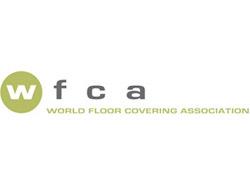S600 Carpet Installation Standard Officially Approved
Anaheim, CA, April 17, 2015—The S600 Carpet Installation Standard, developed under the guidance of the Institute of Inspection, Cleaning and Restoration Certification (IICRC), has been officially approved.
S600 is not written to teach installation procedures. Numerous installation organizations, both union and non-union alike, offer appropriate training. Instead, the standard was created for use primarily by professional carpet installers, and secondarily for carpet manufacturers, product suppliers, building contractors, architects, specifiers, designers, distributors, flooring retailers, end-users, facility managers, institutions and others involved in the carpet industry, to determine appropriate accepted procedures that will ensure a flawless carpet installation.
S600 identifies techniques for evaluating: carpet types, characteristics and conditions; specifications, site conditions, floor preparation and various types of installation procedures.
The Standard is broken down into 12 chapters. ANSI S600 certification allows industry members to:
• offer universally accepted installation procedures for residential and commercial grade carpet making them preferred vendors;
• provide a clear standard for future teaching and certification of carpet installation;
• save money by adopting universally accepted operational practices and business approaches; and
• use the ANSI S600 Certified mark on their products and services and in their advertising.
S600 started as a collaboration between The Carpet and Rug Institute (CRI) and the WFCA, which co-funded the initial investment, with the IICRC tapped to develop the standard and put it through the consensus process.
S600 replaces CRI 104 and 105—relatively short documents—but Mili Washington, standards director for the IICRC, reported in a 2014 FloorDaily interview that the standard took on a life of its own, offering a depth of information not covered in the original CRI standards.
In 2014, the CRI pulled out of process, and the IICRC stepped in as cosponsor of S600.
Because S600 is a consensus document, it was put through public review in which all stakeholders were invited to review and offer opinions. This inclusive process is time consuming and, as such, accounts for the lengthy timeline of creating the document.
Related Topics:Carpet and Rug Institute
